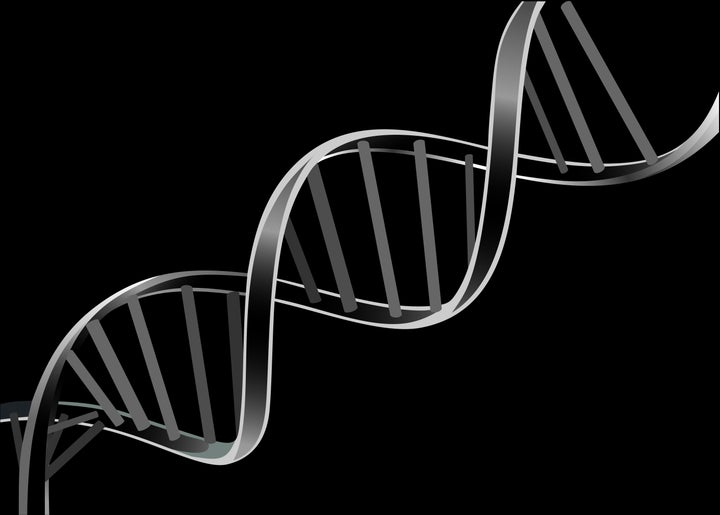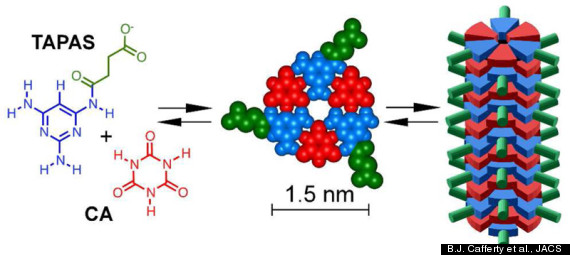
By Robert F. Service
A pair of RNA-like molecules can spontaneously assemble into gene-length chains, chemists in the United States and Spain report. Billions of years ago, related molecules may have created a rudimentary form of genetic information that eventually led to the evolution of RNA and life itself, the researchers say. Although it's likely to be difficult, if not impossible, to prove whether similar proto-RNAs were present at the dawn of life, the researchers are working to see if the proto-RNAs can indeed faithfully encode information and evolve toward RNA.
Origin of life researchers have long thought that RNA, the molecular cousin of the DNA that encodes our genes, may have played a starring role in the initial evolution of life from a soup of organic molecules. RNA has a simpler structure than DNA and is a more adept chemical catalyst. So it would seem that RNA-based life might arise more readily than DNA-based life.
But there are problems with this so-called RNA World hypothesis. For starters, in water, the four chemical components of RNA—the nucleotides abbreviated A, G, C, and U—don't spontaneously assemble to create sizable molecules. So it remains a mystery how the first long gene-length chains of RNA could have taken shape in Earth's ancient oceans. This and other conundrums have led many to believe that RNA may itself be the product of early molecular evolution, and that proto-RNAs arose first and eventually gave way to RNA. "RNA is so perfect today that it has to be the product of evolution," says Nicholas Hud, a chemist at the Georgia Institute of Technology (Georgia Tech) in Atlanta.
 Chemicals known as TAPAS and CA (left) assemble together forming rosettes (middle) that then stack into genelike chains (right).
Chemicals known as TAPAS and CA (left) assemble together forming rosettes (middle) that then stack into genelike chains (right).
Researchers have toyed with the idea of proto-RNA for decades and even come up with potential chemical candidates. One such set of proto-RNAs involves two chemicals called cyanuric acid (CA) and triaminopyrimidine (TAP). TAP comes from a family of compounds known as pyrimidines, as do the RNA bases C and U. CA, meanwhile, is a close pyrimidine relative. Previous research had shown that when CA and TAP were put in an organic solvent, groups of three CAs and three TAPs would spontaneously form ringlike structures called rosettes. These rosettes would then stack atop one another to form long chains.
Unfortunately, in water CA and TAP clump together in large ribbons and sheets and quickly fall out of solution, making it hard to conceive of how these proto-RNAs could have stored genetic information in the earliest stages of life.
Now, however, Hud and his colleagues at Georgia Tech and the Institute for Research in Biomedicine in Barcelona, Spain, have solved this solvent problem. The researchers gave TAP a short chemical tail, transforming it into a chemical they call TAPAS, as they reported on Friday in the Journal of the American Chemical Society. And that one change encourages it to assemble with CA to form rosettes in water. What is more, the rosettes stack atop one another, forming long genelike chains made up of as many as 18,000 individual TAPAS and CA components—quite a stack of small plates.
"The nice thing [about the current study] is this is a demonstration of self-assembly in water," says Ramanarayanan Krishnamurthy, an origin of life chemist at the Scripps Research Institute in San Diego, California. "That is a step in the right direction."
The next step, Hud says, will be to see whether this two-component assembly can be made to encode information like a primitive gene and to evolve toward the structure of RNA. If so, that still won't settle the debate as to whether CA and TAPAS gave life its start. But it will suggest one plausible chemical route to life's origin.
ScienceNOW, the daily online news service of the journal Science
